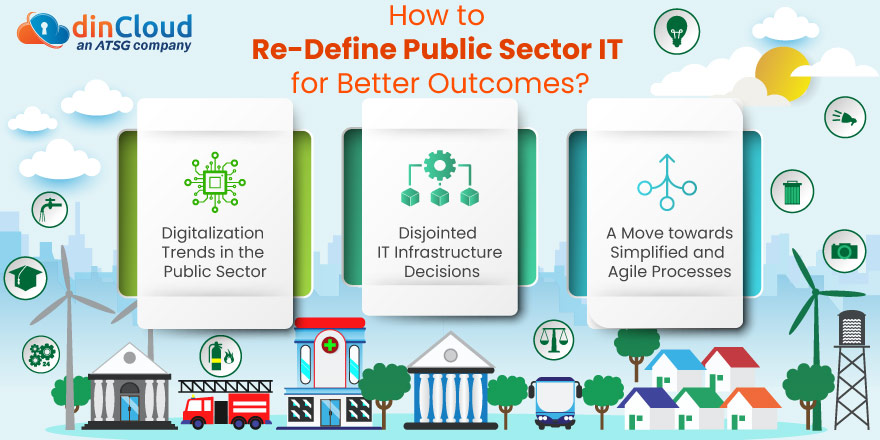The pandemic took the whole wide world by storm, and spared no one. Governments and public sector organizations were one of the hardest hit, because they found themselves on the frontlines of pandemic response initiatives.
On many counts, public sector organizations did a decent job, especially given the unprecedented challenges and limitations of this global health crisis. However, there is a lot of room for improvement, and re-defining public sector IT infrastructures.

The initial momentum which public sector enterprises demonstrated in response to the pandemic needs to be harnessed into something much bigger. The end goal is to develop and re-factor public sector IT around flexibility, scalability and agility.
Related: How to Leverage Virtual Workspaces to the Max?
The “target audience” of any Government is mind boggling in terms of the citizens they have to serve. In the case of crises, like a global pandemic, the level of urgency rises even further. Take the example of Covid-19, which had millions in need of support.
Digitalization Trends in the Public Sector
Research entity Gartner recently conducted a very insightful study on the IT infrastructures of public sector organizations. The study also sheds light on how various digitalization initiatives should have progressed, and how they actually went.
According to the research by Gartner, a sizeable 72% of IT leaders within public sector enterprises are accelerating digitalization initiatives. However, an alarmingly high 55% of such IT programs fail to scale, as per the changing circumstances.
This inability of public sector IT initiatives to scale successfully, as and when needed, represents a major fault line; how these processes are visualized and then executed. Gartner has stressed adopting a holistic and broader picture approach to rectify this issue.
Related: 4.5 Trillion Dollars is the Estimated IT Spending in 2022 – Gartner
Disjointed IT Infrastructure Decisions
The study highlights disjointed IT infrastructure decisions and investments in the case of most public sector enterprises. The outcome of this approach is that such initiatives fall short of creating a real impact in the lives of millions of citizens availing public services.
The remedy for this issue, as suggested by Gartner, is that IT decision makers from different public sector enterprises should sit together and adopt a more “broader spectrum” approach when making technology investment decisions.
This approach stands to benefit public sector enterprises in two major ways. Firstly, many IT operations would be “shareable” among the different public sector organizations, saving both costs and duplicity of efforts.
Secondly, IT infrastructure and investment decisions with a more holistic approach will align in a much better way with the broader policy framework of governments. One way of looking at the millions of citizens being served is that they are the state’s customers.
By adopting this approach, the entire mindset and power dynamic completely changes, and for the good. State enterprises will start designing their IT infrastructures and processes in a way that is geared towards agility, flexibility, transparency and efficiency.
Related: How will Desktop as a Service (DaaS) Grow in Year 2022?
A Move towards Simplified and Agile Processes
Gartner’s research stresses upon Government enterprises to also simplify their processes in the whole exercise of digital transformation. The simpler a process, the easier will it be for the public sector organization to deliver the services expected of it.
Simpler and well integrated processes at the public sector level also ensure that Governments are in a much better position to tackle disruptive events like a global pandemic. This in turn results in happy citizens, a welcome sign for any government.
Conclusion
The positive momentum state enterprises gathered during the early days of the pandemic is losing both steam and focus. It is high time to re-vitalize the whole process by re-defining how IT investment and infrastructure decisions are taken at the state level.
Even otherwise, many processes of public sector organizations are either inter connected, or at the very least, inter-linked. A holistic approach towards designing IT infrastructures and operations will introduce efficiency in the whole process.
Related: A Recap of Cloud Trends in Year 2021, and the Outlook for 2022
Lastly, Gartner stresses the need for developing scalability as a built-in feature of the operations being performed by public sector organizations, thus improving the overall resilience of these organizations amidst crises and disruptive events.
Contact dinCloud, an ATSG company, for highly secure, compliant and scalable cloud solutions for your enterprise needs.


